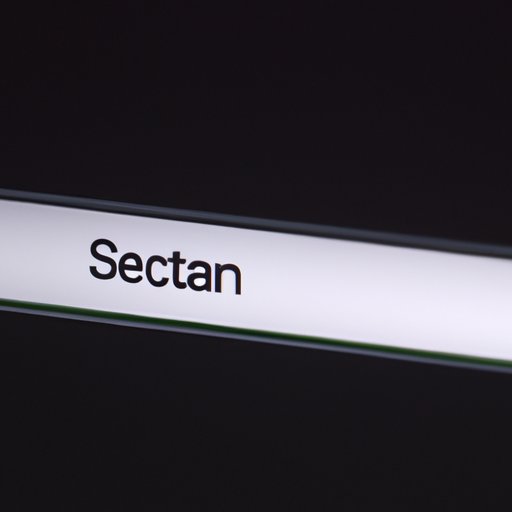
I. Introduction
Restarting a Mac may seem like a simple task, but it is essential to keep your machine running smoothly. Restarting your Mac frees up memory, clears cache files, and fixes minor software issues that can often go unnoticed. Fortunately, restarting a Mac can be done in several ways, each with its benefits. In this article, we will explore six methods of restarting a Mac, so you can choose the most convenient for you.
II. Using the Apple menu
Using the Apple menu is one of the easiest ways to restart your Mac. To do so:
- Click on the Apple menu in the top left corner of your screen.
- Click on “Restart.”
- A pop-up message will confirm your choice to restart the Mac. Click “Restart” again to confirm.
This method provides a quick and convenient way to restart your Mac, as it requires just a few clicks. Additionally, it provides a visual cue that your Mac is, in fact, restarting, which can be reassuring for users worried about accidentally shutting down or losing data.
III. Using the keyboard
The keyboard shortcut to restart a Mac is simple and easy to remember. To use this method:
- Hold down the Control key.
- While still holding the Control key, press the power button.
- A pop-up message will appear. Click “Restart” to confirm.
The keyboard shortcut is perfect for quick and efficient restarts, as it allows you to restart without even lifting your fingers from the keyboard. For frequent users of keyboard shortcuts, this method will feel natural and can be completed in mere seconds.
IV. Using Terminal
Terminal is a powerful tool for Mac users that provides access to critical system functions like restarting. To use this method:
- Launch Terminal from the Applications/Utilities folder.
- Type the command “sudo shutdown -r now” and hit Enter.
- Enter your admin password when prompted and press Enter.
The Terminal method may seem intimidating for novice users, but it provides a quick and efficient way to restart your Mac, especially if you are already working in the Terminal. Additionally, this method can be especially useful for troubleshooting purposes when issues need to be resolved using Terminal commands.
V. Using Siri
If you are a fan of Siri, you can also use the voice assistant to restart your Mac. To use this method:
- Activate Siri by clicking on the Siri icon or pressing the Siri shortcut on your keyboard.
- Say, “Restart my Mac.”
- Siri will confirm your choice and initiate the restart.
The Siri method is a hands-free way to restart your Mac, which can be ideal for users who prefer voice commands over clicking or typing. Additionally, for users who use Siri regularly for other tasks, using Siri to restart your Mac can feel more natural.
VI. Using the Dock
If you always have the Dock visible on your Mac desktop, you can use it to restart your machine quickly. To use this method:
- Click on the Apple icon in the Dock.
- Hold down the Option key, and “Restart” will appear instead of “Shut Down.”
- Click “Restart.”
The Dock method provides another easy and quick way to restart your Mac, which can be ideal for users who always have their Dock visible and would instead not navigate to the Apple menu. Furthermore, it gives users the added convenience of being able to restart their Mac from virtually anywhere on their desktop.
VII. Using the Power Button
The power button is there for you in those instances when your Mac becomes unresponsive or crashes. Even though hardware experts do not recommend using the power button as a primary method for restarting a Mac, it is still a viable option when needed. To use this method:
- Press and hold the power button down for 5-10 seconds.
- Your Mac will shut down.
- Press the power button again to turn your Mac back on.
To use the power button method, you need to be mindful of the fact that pressing and holding the power button down forcibly shuts down your Mac. Over time, this can cause potential hard drive and file damage, which may require professional support to repair.
VIII. Using the Login Screen
Finally, you may also restart your Mac from the login screen. To use this method:
- Click the Apple icon in the top left corner of the login screen.
- Click “Restart.”
This method is ideal for users who prefer to restart their Mac before logging in. Additionally, for users who have sensitive data on their Mac, logging out before restarting can add an extra level of security and prevent possible data breaches.
IX. Conclusion
Restarting your Mac is essential for keeping it running smoothly. In this article, we have discussed six ways to restart your Mac, each with its benefits. While all methods will get the job done, we recommend the keyboard method for its convenience and ease of use. Whichever method you choose, we strongly encourage you to restart your Mac regularly and keep it running optimally.





